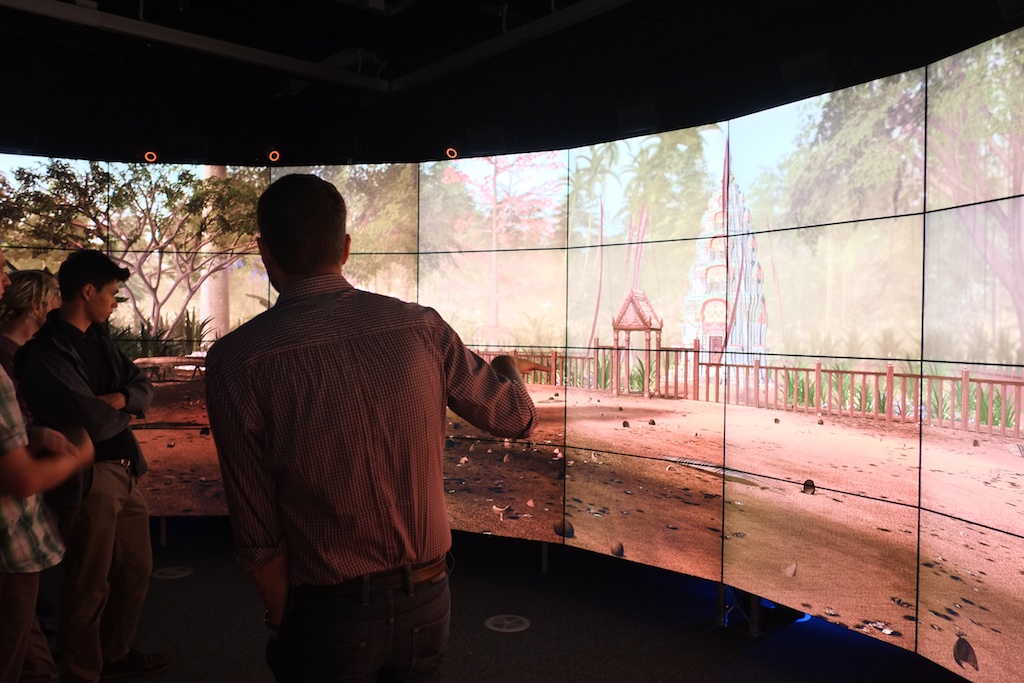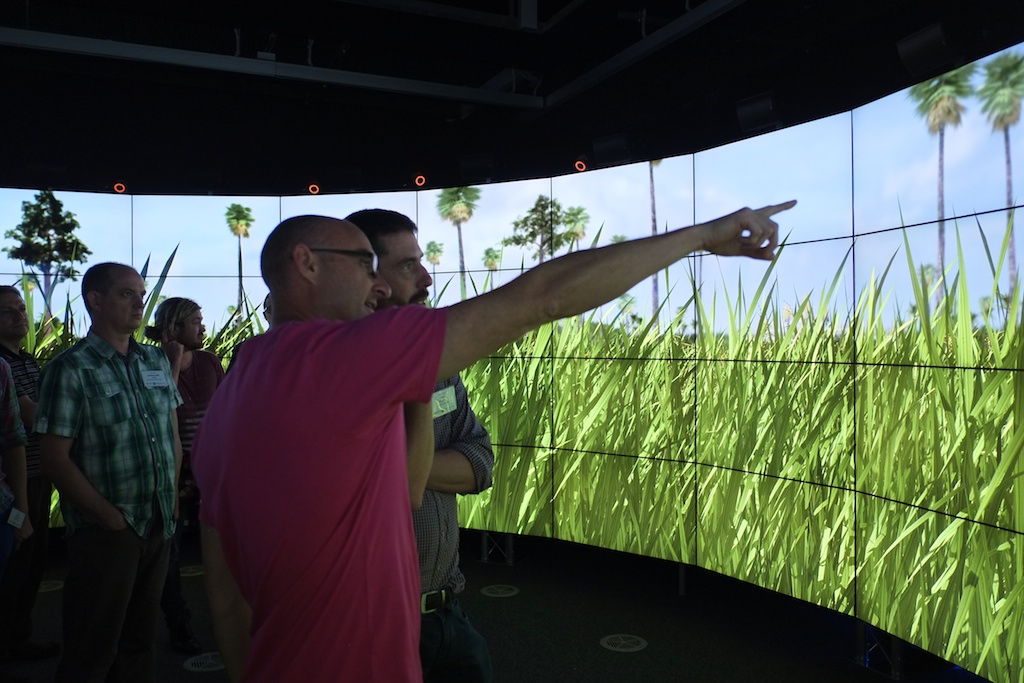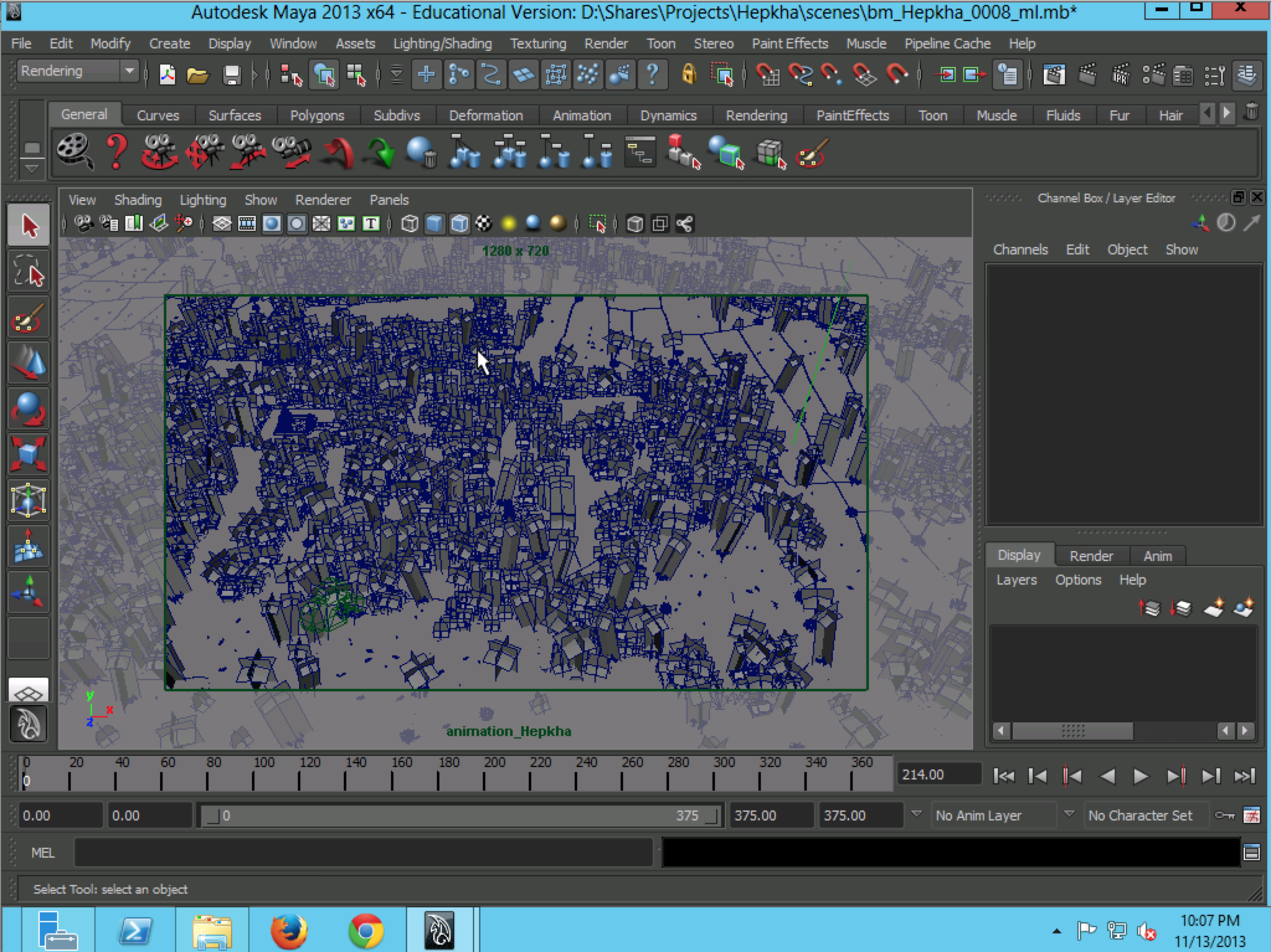The Visualising Angkor Project – “Visualising Angkor Project” Monash University Faculty of IT, 2013 was one of the main showcases during OzViz 2013 held last December 9-10 2013 at Monash University. Tom Chandler (project leader) and his team from Faculty of Information Technology used the NeCTAR Research Cloud to generate high-resolution visualisations for the CAVE2™ – the next-generation immersive 2D and 3D virtual reality environment, located at New Horizons, Monash University.
The Maya/mental ray virtual render farm has been instrumental in producing 27K x 3K panoramic stills and animations for this project. This workflow has been proven very challenging for Tom and his team before they started using the NeCTAR Research Cloud for their rendering jobs.
The resulting high-resolution stills and animations are loaded into the CAVE2™ environment using advanced visualisation software frameworks. This provides a compelling visual and aural environment with a 330° display view – the lens of the 21st century microscope.
In 2014 the R@CMon and CAVE2™ teams will work together to build a CAVE2™ development environment on the NeCTAR Research Cloud. This will give end-users the opportunity to work with and test the tools and middleware available in the CAVE2™ environment on-demand, without needing access to the facility itself. This development image will take advantage of R@CMon’s new GPGPU accelerated VM flavors – more on that soon!



